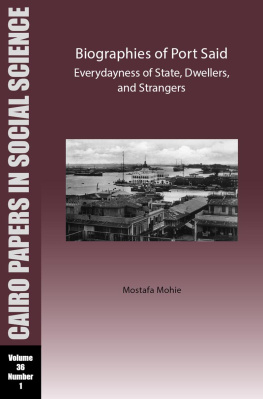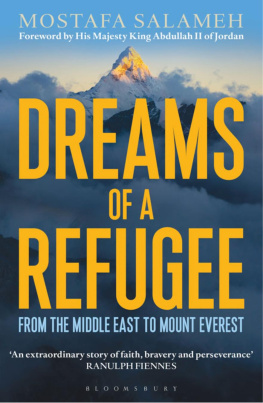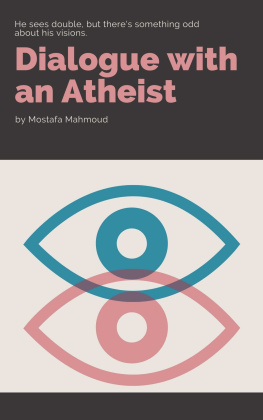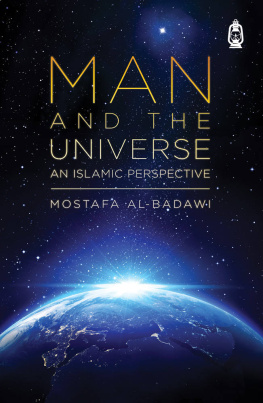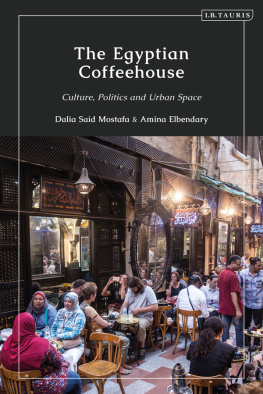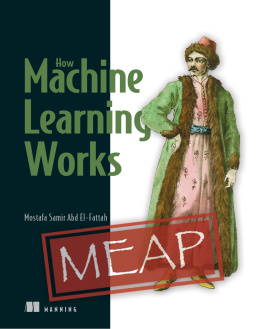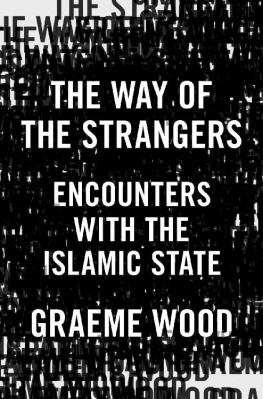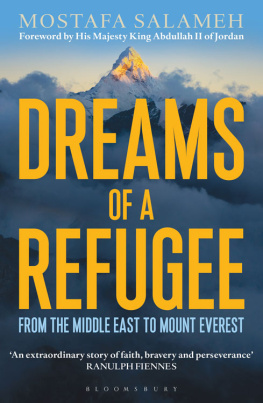CAIRO PAPERS IN SOCIAL SCIENCE is a valuable resource for Middle East specialists and non-specialists. Published quarterly since 1977, these monographs present the results of current research on a wide range of social, economic, and political issues in the Middle East, and include historical perspectives.
Submissions of studies relevant to these areas are invited. Manuscripts should be around 150 doublespaced typewritten pages and submitted in hard copy or electronically. References should conform to the format of the American Anthropological Association (references with author, date and page parenthetically within the text). Manuscripts are refereed and subject to approval by the Editorial Board.
Opinions expressed in CAIRO PAPERS do not necessarily reflect the views of the editorial staff or of the American University in Cairo. The editors welcome diversity of subject matter and viewpoint.
EDITORIAL BOARD
Maha Abdelrahman Cambridge University | Joel Beinin Stanford University |
Amina Elbendary Arabic & Islamic Civilizations, AUC | Sharif Elmusa Political Science, AUC |
Nicholas S. Hopkins, Chair Anthropology, AUC | Ann M. Lesch Political Science, AUC |
Marco Pinfari Political Science, AUC | Hoda Rashad Social Research Center, AUC |
Malak S. Rouchdy Sociology, AUC | Reem Saad Anthropology, AUC |
Hanan Sabea Anthropology, AUC | Mustapha K. Al-Sayyid Pol. Science, Cairo U. |
Earl L. Sullivan Political Science, AUC | Iman A. Hamdy Editor |
For submissions and inquiries,
please contact:
Dr. Iman Hamdy
Cairo Papers in Social Science
CAIRO PAPERS IN SOCIAL SCIENCE
VOLUME 36 NUMBER 1
Biographies of Port Said:
Everydayness of State, Dwellers, and Strangers
Mostafa Mohie
THE AMERICAN UNIVERSITY IN CAIRO PRESS
CAIRO NEW YORK
Cover photo: Port Said: Harbbor and entrance to the Suez Canal showing the building of the Suez Canal Company. The Oriental Commercial Bureau in Port Said.
Copyright 2020 by the American University in Cairo Press
113, Sharia Kasr el Aini, Cairo, Egypt
420 Fifth Avenue, New York, NY 10018
www.aucpress.com
All rights reserved. No part of this publication may be reproduced, stored in a retrieval system, or transmitted in any form or by any means, electronic, mechanical, photocopying, recording or otherwise, without prior written permission of the copyright owner.
eISBN 9781649030696
Version 1 EPUB
Contents
Acknowledgments
Introduction
Port Said and the Suez Canal
Strangers Gaze
Methodology and Positionality
Al-Tahgir: The Production of the Self and the Other
Forced Migration as a Moment of Rupture
Making the Self
Producing al-Aghrab
Shifting Modalities: From Sea Trading to Land Trading
Port Said as a Place
Working in the Canal
The Free Trade Zone
Sea Trading in the FTZ
Al-Simsimiya Has a Story to Tell
Al-Simsimiya Performances
A Brief History of al-Simsimiya
Remaking the City after the Port Said Stadium Massacre
The Massacre and Its Immediate Effects
A Response to Civil Unrest
Conclusions and Reflections
References
About the Author
Acknowledgments
To the interlocutors who opened their hearts and shared their memories and experiences generously. I would not be here without you.
To Hanan Sabea, Reem Saad, Hatem Al-Rustom, Martina Reiker, Malak Rouchdy, Michael Reimer, Amr Shalakany, and Ramy Aly for the illuminating and intellectually intriguing journey.
To Alia Mossallam, who inspired me to work on Port Said.
To Adham Bakry and Mohamed Ghaly for guiding me through Port Said.
To Lina Attalah and my colleagues and friends at Mada Masr.
To Tarek Mostafa, Ayah Abu Pasha, Soha Mohsen, and Noha Fikry, thank you for helping me through this journey.
To Mozn Hassan and Omnia Khalil for always supporting me.
CHAPTER 1
Introduction
I visited Port Said twice before conducting my fieldwork between August and December 2017. The first visit was in February 2013. As a journalist, I was covering the protests after the massacre in Port Said prison. I stayed for only three days, covering this intense moment, before returning to Cairo with ambivalent feelings toward the city and its people. On one hand, the city was in a rebellious mood against the police brutality; on the other, it was full of chauvinistic rhetoric about Port Said and skepticism toward the intentions of anyone from Cairo.
My second visit was illuminating for me. I returned to Port Said in January 2016 to participate in the workshop Ihky ya tarikh, which was organized by the history scholar Alia Mossallam. I stayed for a whole week learning and discussing the different narratives about Port Said, the different approaches to reading and reconstructing history. By the end of that week, I decided that Port Said would be the topic of my research.
I became interested in Port Said for the following reasons. It was built as part of the project of the Suez Canal in the nineteenth century. Unlike most Egyptian cities, towns, and villages, which have a very long history that goes back thousands of years, Port Said is only 158 years old. This state of novelty affords researchers a wide range of documents, photos, maps, memoirs, and family collections, which constitutes a treasure of records of the constructions of the social since the founding of the city. The building of the city in the nineteenth century made it a field for the modernist techniques of ordering the social and the spatial, which will be explained later in this chapter. Because of the Suez Canal, the international trade, and the foreign presence in the city, mainly between 1869 and the mid 1950s, Port Said was a junction point on the global, national, and local scales, where different networks of forces define what it is as a city. With al-udwan al-thulathi (the so-called Tripartite Aggression against Egypt in 1956 by the British, French, and Israeli armies), the city became a symbol of resistance in the nationalistic narrative. The declaration of Port Said as a free trade zone in 1975 rendered the city a symbol of the infitah, the economic open-door policy that started during the Sadat era. Thus the city has always represented the shifts of the Egyptian modern state, from the colonial to the national-liberation to the neoliberal eras.
It is true that Port Said is not the only city that reflects the shifts of the Egyptian modern state. Actually, every city does, because every city was affected by these shifts. However, apart from Cairo and Alexandria, the two biggest cities in Egypt, many Egyptian cities are integrated in the national narratives about the more recent history of the country. Yet the Tripartite Aggression in 1956 and the declaration of the Free Trade Zone (FTZ) in 1975 integrated Port Said into the national narratives. While the first turned Port Said into a symbol of resistance, the second reproduced the city as an example of the

